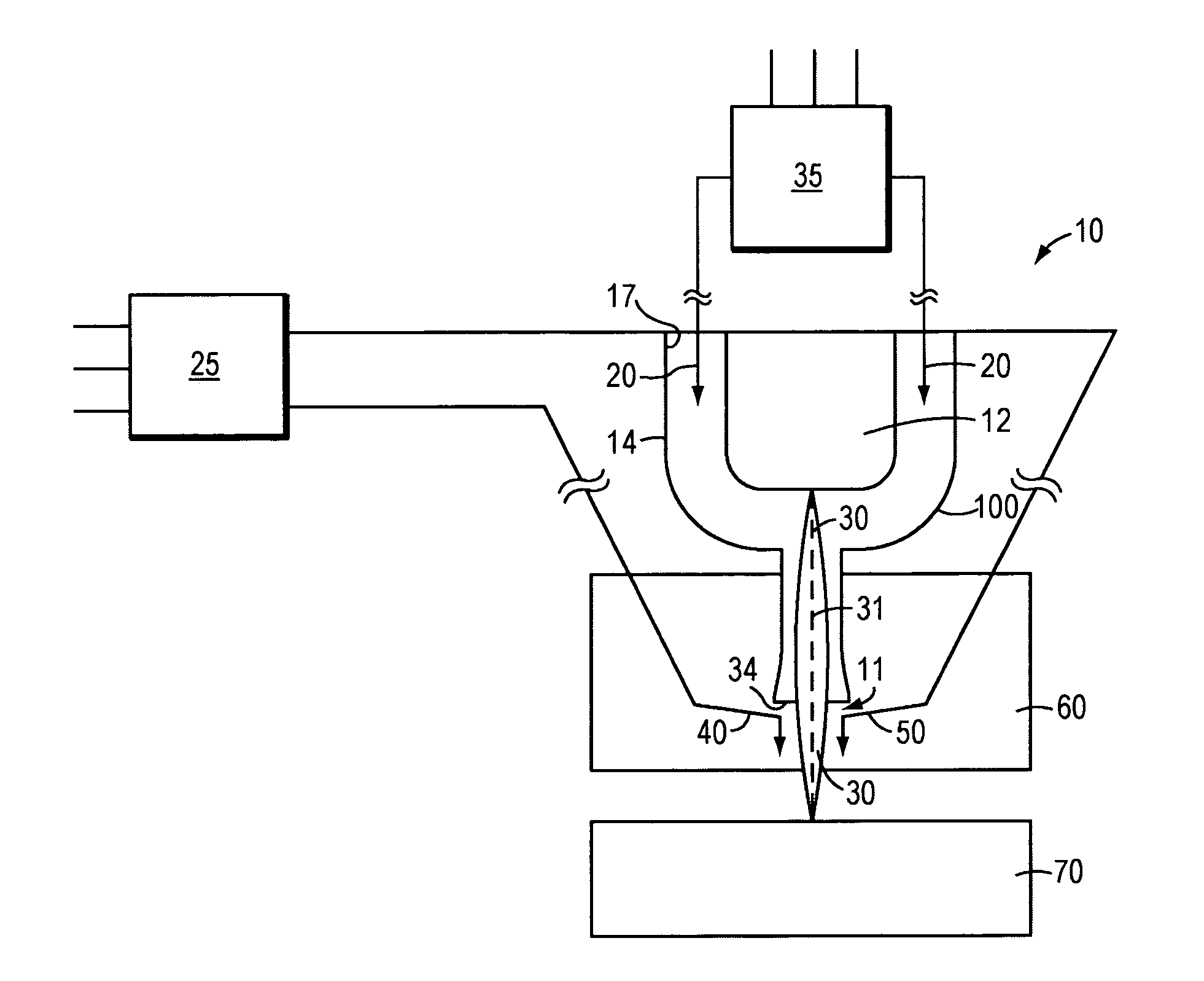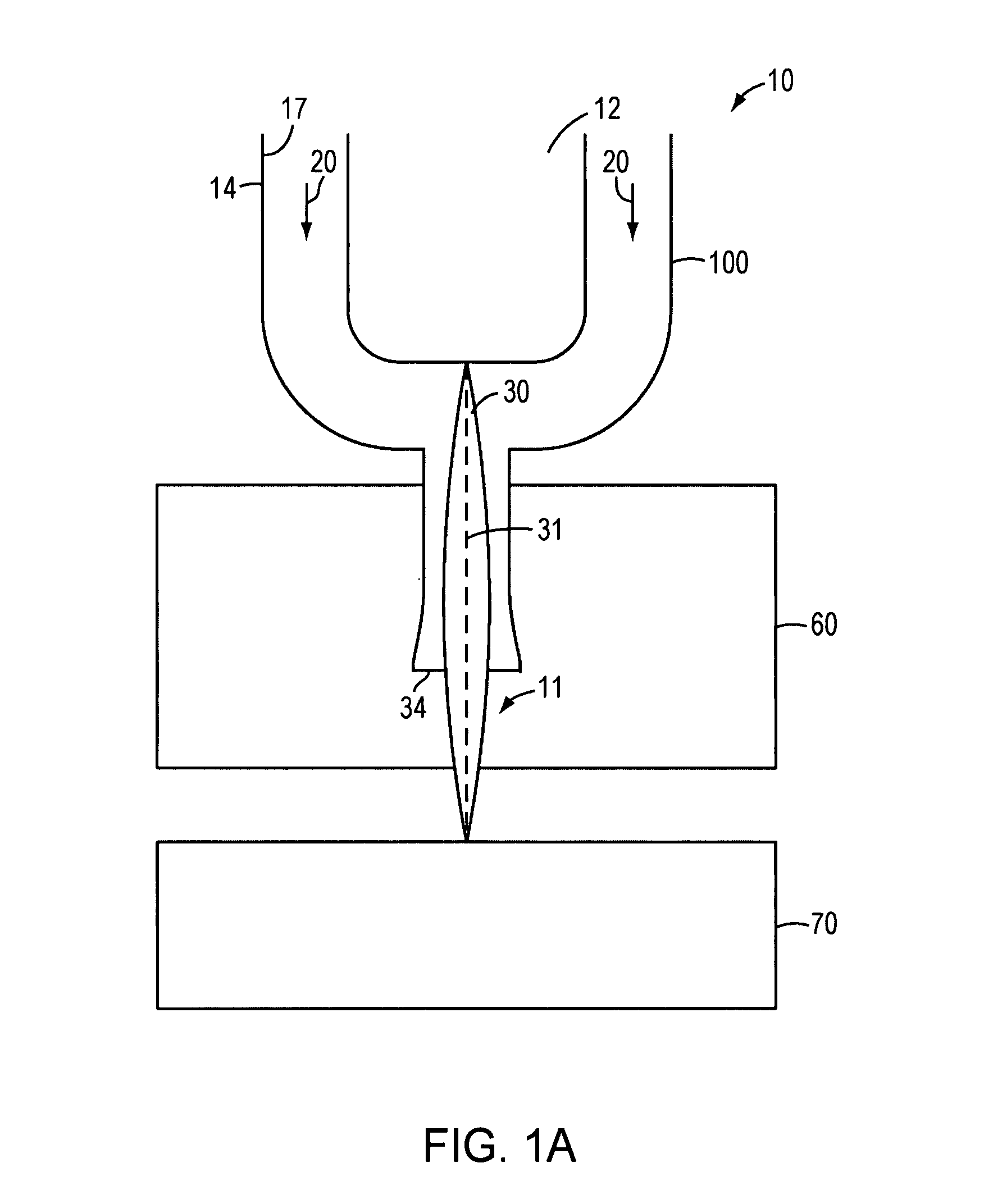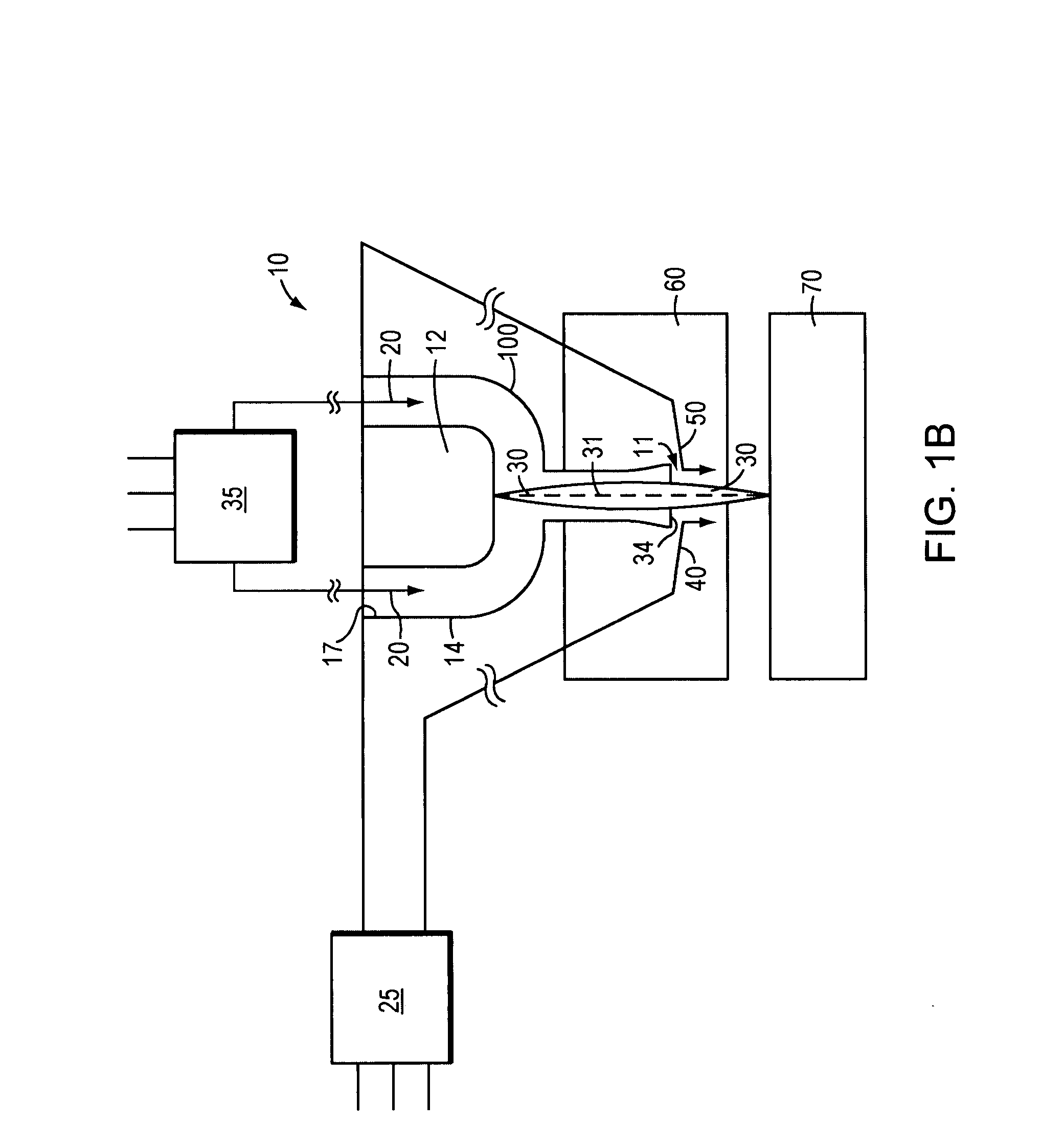Method and apparatus for improved plasma arc torch cut quality
a plasma arc torch and cutting quality technology, applied in plasma welding apparatus, plasma technique, manufacturing tools, etc., can solve the problems of increasing reduce the entrainment of secondary gas, reduce the variation of the cut angle, and reduce the entrainment
- Summary
- Abstract
- Description
- Claims
- Application Information
AI Technical Summary
Benefits of technology
Problems solved by technology
Method used
Image
Examples
example 1
[0088] The experimental results demonstrate that introducing a secondary gas mixture including helium improves plasma arc torch cut quality. Cut quality is measured by surface roughness, top dross and top edge rounding, these measures are all reduced when the secondary gas includes helium and the secondary gas including helium flows at an angle that reduces entrainment of the secondary gas into the plasma arc.
[0089] Experiments were performed in which ⅜″ mild steel was cut using a plasma arc torch with various secondary gas mixtures of oxygen, nitrogen, argon, and helium. Plasma has a very low density and a high thermal conductivity. Both argon and helium are chemically inert gases that are not expected to chemically react with the surface of the workpiece. However, helium and argon have different density values, thermal conductivity values, and atomic weights. Helium has larger thermal conductivity and a lower density than argon. Specifically, Helium has a thermal conductivity of ...
example 2
[0099] In a second experiment, results demonstrate that introducing a secondary gas mixture including helium improves the quality of holes cut into mild steel by a plasma arc torch. Through holes cut into a metal material by a plasma arc torch can taper at one end of the through hole. Through holes are made in metal material to enable bolts to be secured to the material. Tapering in through holes causes issues including difficulty in cylinder / cutting clearance and issues in the field including difficulty affixing bolts through a through hole in a material. The thickness of the material through which a through hole is cut also impacts the through hole quality. Tapering in through holes is analogous to top edge rounding in an application where a substantially linear cut is being made. Imperfections in through hole quality is magnified where a through hole has a small diameter, because, for example, the impact of tapering can impact the usability of a through hole (for example, the abi...
PUM
| Property | Measurement | Unit |
|---|---|---|
| Fraction | aaaaa | aaaaa |
| Fraction | aaaaa | aaaaa |
| Fraction | aaaaa | aaaaa |
Abstract
Description
Claims
Application Information
 Login to View More
Login to View More - R&D
- Intellectual Property
- Life Sciences
- Materials
- Tech Scout
- Unparalleled Data Quality
- Higher Quality Content
- 60% Fewer Hallucinations
Browse by: Latest US Patents, China's latest patents, Technical Efficacy Thesaurus, Application Domain, Technology Topic, Popular Technical Reports.
© 2025 PatSnap. All rights reserved.Legal|Privacy policy|Modern Slavery Act Transparency Statement|Sitemap|About US| Contact US: help@patsnap.com



